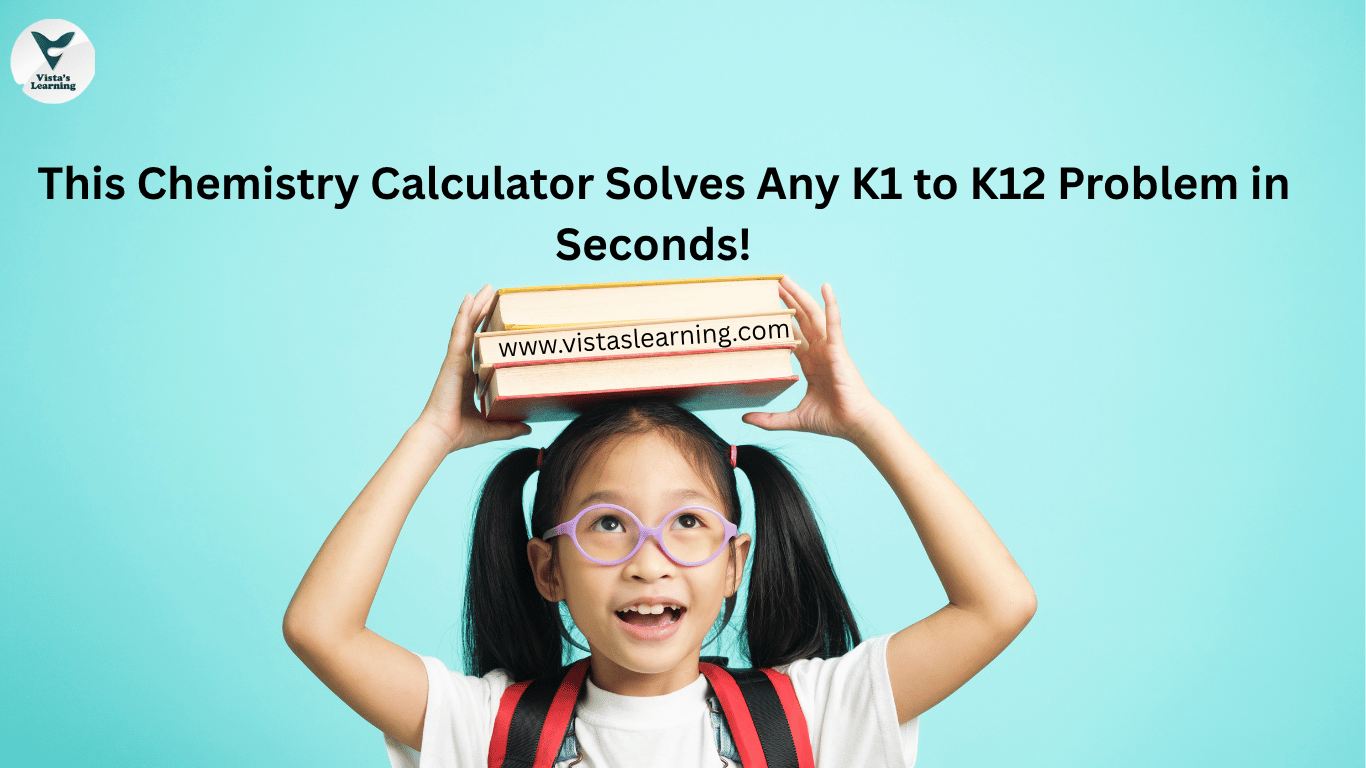
This Chemistry Calculator Solves Any K1 to K12 Problem in Seconds!
With today’s fast-paced schools, students in grades K–12 have to work harder to learn chemistry. Whether they are trying to solve simple equations, figure out molarity, or figure out how reactions work, the growing brain load can be too much for them to handle. So, adaptive chemistry is in a good spot because it’s designed so that students of any grade can interact with it and gradually move on to more difficult material with more trust. This need is met by the chemistry calculator at Vistas Learning’s, which gives quick, accurate answers to a wide range of chemical events.
1. Why students in grades K–12 have trouble with chemistry
Kids have to move quickly from looking at very small particles in elementary school to high school numbers that are hard to understand. This jump can throw off even the smartest students. If bad ideas start to spread early on, they will stay and make later topics seem impossible. Students can see instant pictures with digital problem solvers and interactive models, which let them change the way they think in real time and in real chemical situations. These tools help kids get rid of confusion before it gets too thick, which makes it easier for them to get a better idea of chemistry in their minds.
2. The Part Technology Plays in Today’s Schools
E-learning has made classes much more than just old textbooks. Students can learn in ways that work for them based on what they already know and how well they can do things with split lessons, quizzes that change based on answers, and virtual labs. Once, feedback had to wait until the teacher picked up the pencil. Now, it comes right away when an answer is clicked. Kids can keep practicing the things they need to learn by getting quick, clear instructions. When good education is combined with technology, it stops being a nice-to-have extra and becomes the solid base on which students learn deep chemistry from K1 to K12.
3. Digital solvers are great at breaking down complicated chemistry calculatar into steps that are easy to follow.
When students figure out molecular weight or balance ionic reactions, they directly see the logic behind the problems. This makes it less important for them to memorize formulas and more helpful for understanding the material.
4. When online lessons are combined with computer tools:
The effect is a very beneficial learning experience. Because the software does the hard math and makes educational graphics on its own, teachers are free to focus on higher-order thinking and help students in real time.
5. The software’s draw comes from a small group of important features:
– Makes it easy to balance chemical equations. – Instantly changes between different units and measures.
– Makes very accurate predictions about the results of reactions.
– Shows a user experience that is made to be easy for students of all ages to use.
– Works just as well on desktop computers as it does on mobile devices.
Because of these features, the app is a reliable learning partner for students, parents, and teachers alike.
6. New research on teaching tools:
It has shown that students who used a digital problem solver along with their regular course materials got 35% better at solving problems than their peers who only used textbooks. Even more progress was made when these students got real-time help from teachers.
7. From kindergarten to 12th grade, the solution changes how hard each step is:
The main goal for grades K–5 is to help students feel comfortable with big ideas like what elements are, how substances mix, and the most basic chemical reactions.
8.From grades K6 to K8:
We start right away with basic skills like handling chemical equations and understanding molarity. From K9 to K12, students easily move on to thermodynamics and organic chemistry. With this flexible, stacked system, no one can move on until they’ve mastered the most important knowledge blocks.
To get the most out of the digital solution, parents are encouraged to practice with their children while teachers use it in virtual lessons and show examples of problems on the screen. Every kid gets steady, useful help when home and school work together.
In the future, chemistry classes will have AI systems that can read what each student needs right now and give them immediate, personalized help. With these smart tools, online films that are static will become dynamic, student-centered discoveries.
Every student in grades K–12 should start using the digital chemistry tool right away, because technology changes so quickly:
It helps you understand things faster and makes complicated ideas clear, which leads to more interest and faster learning. It makes a strong network that can meet all of the needs of today’s students when combined with live digital help.
In conclusion
A few years ago, digital chemistry tools were just nice to have. Now, they are required in all K–12 classes. Kids can easily learn chemistry from start to finish, whether they are at school or at home, if their teachers use these tools with live online class. If parents, teachers, and kids start using these tech tools now, they will be better ready for the changes that are coming to schools.
FAQs:
1. What is a chemistry calculator?
A digital application that provides step-by-step resolutions for chemical equations and quantitative problems.
2. Can K1 to K12 students use it easily?
Yes, the interface is deliberately designed to be accessible across all grade levels.
3. Does it work for advanced topics like organic chemistry?
Certainly; the application accommodates both foundational and advanced chemistry curricula.
4. Is it available on mobile devices?
Most platforms are optimized for both mobile and desktop access.
5. Can teachers use this in online classes?
Yes, the tools are well-suited for interactive demonstrations in live class environments.
6. Do I need an internet connection to use it?
Some applications necessitate connectivity, while others provide a fully functional offline mode.
